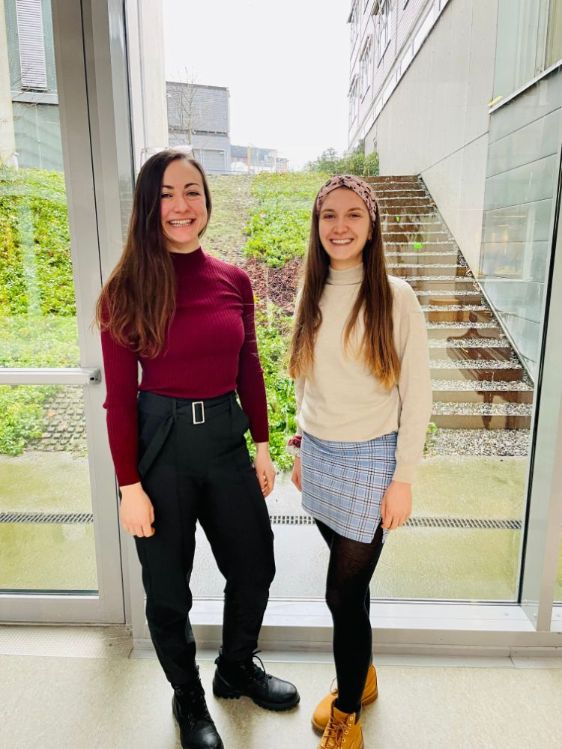Cancer, after accidents, is the second-leading cause of death in children and adolescents. Brain tumors are counted amongst one of the most common types of cancer in children and adolescents. They are rare but often deadly, and there are few known risk factors for developing a brain tumor. Understanding tumor biology to build better therapies is desperately needed.
Determined to help children with brain tumors and their families
Anne Martina Kraus is a physician and is currently enrolled in the MD program at the University of Zurich. She has been interested in the brain for as long as she can remember. During her medical studies, neurology, the study of the nervous system, was her favorite subject. However, in a clinical rotation year in Portugal, she encountered patients who inspired her to study childhood brain cancer in more depth.
— I love pediatric neurooncology as a topic, even more so because I had the opportunity to meet some little patients in my clinical rotation year in Portugal. They were suffering from brain cancer, which put a tremendous strain on them and their families. I really appreciated that I could accompany them and their parents. After medical school, I wanted to learn how to make the therapies more precise because we give so much medicine to these patients with so many side effects, Anne explains.
Sophie Mottl is a medical student at the Technical University of Munich and enrolled within the MD program at the University of Heidelberg. In Germany, it is possible to work on an MD thesis before completing your medical degree. Therefore, for Sophie, this was an opportunity to dig deeper into studying a type of brain cancer that is deadly to children.
— It's very important to study childhood tumors. Pediatric cancer patients haven't really seen a lot in life. Every little step is one step further to giving children and their parents some more years together, which already makes a big difference. Moreover, the aim here is that maybe in a few years, we will be talking about a more prolonged survival in general and an everyday life. I love children, and it's very hard to see children that age who don't have any hope, Sophie explains.
Two types of brain tumors affecting children are diffuse midline glioma and medulloblastoma. Diffuse midline glioma is a rare brain tumor that affects approximately 2 in 1,000,000 children per year. It is highly aggressive, with a median survival time of less than a year after diagnosis. Medulloblastoma has a better chance of survival, but it is also aggressive, and current therapies cause many side effects.
Understanding the genetics of childhood tumors is the key to improving patient outcomes
Both Anne and Sophie are undertaking their research projects within the Waszak lab at NCMM to understand the genetics of childhood brain cancers. Their projects aim to understand the pathway through which specific mutations can cause the development of a brain tumor. The team uses bioinformatic methods to build a thorough profile of what mutations cause depending on the patient’s genetic background. This could result in faster screening and diagnosis, more precise medicines, and ultimately increase life expectancy and quality of life.
— You have the DNA, which is like the book where all the information is written. Then you want to look at where parts of the text are marked and where parts of the pages are glued together. That is what I’m looking at, Anne explains.
International collaboration
Thankfully these types of childhood brain tumors are rare. However, this also means that collaboration across the globe is essential to advance our knowledge about these tumors. Dr Waszak collaborates with clinical trial networks and preclinical research groups in Europe, North America, and Australia to develop novel computational approaches that help better understand the biology of these aggressive diseases.
The Waszak group has also focused on making their findings available to a broad community. They have contributed with nearly 200 authors and editors to the 5th edition of the World Health Organization Classification of Tumors of the Central Nervous System, an international standard for patient care and cancer research.
Contact
Read more
- Waszak Lab
- WHO Classification of Tumours of the Central Nervous System
- Summary of the Inaugural WHO Classification of Pediatric Tumors
- Pacific Pediatric Neuro-Oncology Consortium
- Children’s Brain Tumor Network
